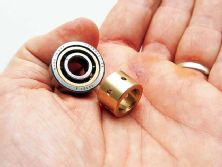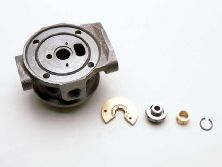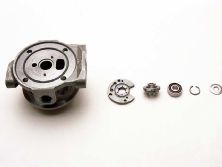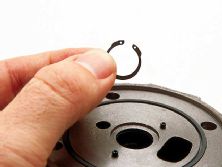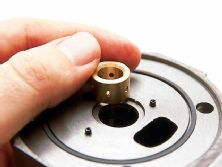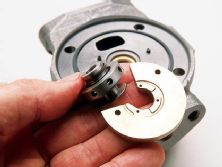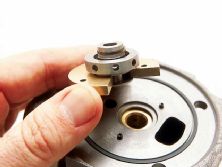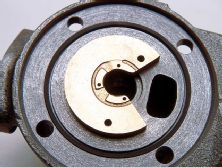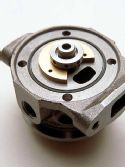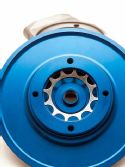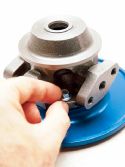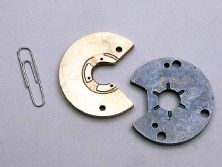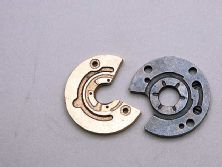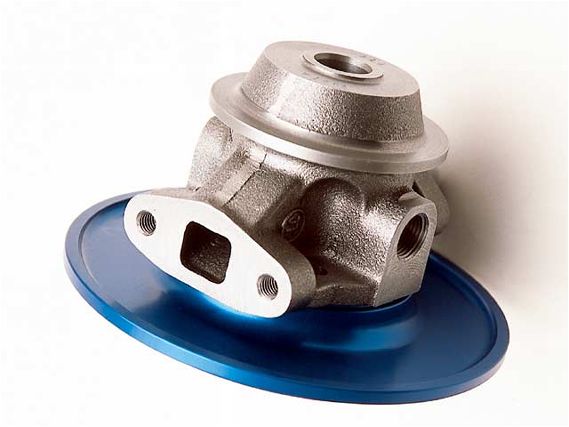 | Basic Turbo Tech: Part 1
| Basic Turbo Tech: Part 1 The center cartridge is often taken for granted as much of the attention when it comes to turbochargers is focused on housing sizes and wheel trims. The center section is the "durability center" of a turbo. Lubrication and cooling of the unit happens here and if things go bad, it's game over. There's no doubt that ball-bearing cartridges have been a godsend for turbo enthusiasts. Almost like cheating, tuners are using the ball-bearing design's quick spool-up to negate turbo lag and to run bigger units on smaller applications.
Garrett's dual ball-bearing turbos were originally designed for diesel engines. Diesels were known to produce throttle tip-in smoking. The smoke was the byproduct of a rich condition that occurs after the throttle is opened, but before boost is realized. Response was the goal because diesels don't rev very high. So ball-bearing turbos designed to spool-up quickly were developed that shortened the time between the pedal and the boost, which helped solve the problem. The highly responsive design was perfect for extreme motorsport applications, which eventually led to the HKS/Garrett GT lineup now seen on the street, as well as offerings from Turbonetics and other manufacturers.
In the first of this two-part article, we'll examine the inner workings of the center cartridge to develop a basic understanding of its functions. In the next installment, we'll explore the different types of ball-bearing center sections.
Learn how the center cartridge works as we assemble a conventional journal center section and outline some of the differences between journal bearings and Turbonetics single ball-bearing center sections.
The 270 vs. 360 Dilemma
Many conventional journal- bearing turbos use a 270-degree thrust-bearing washer (at left), while the new breed of conventional and ball-bearing turbos employ 360-degree thrust bearings. The advantages of a 360-degree bearing include a full circle of lubrication, six orifices on the washer instead of three for the 270-degree unit, and an updated pad strategy to better disperse oil where it's needed. Turbonetics uses 360-degree bearings on all of its T04B and T04E turbochargers. There isn't much of a dilemma here; if you have the opportunity to use a 360-degree bearing, jump at it.

